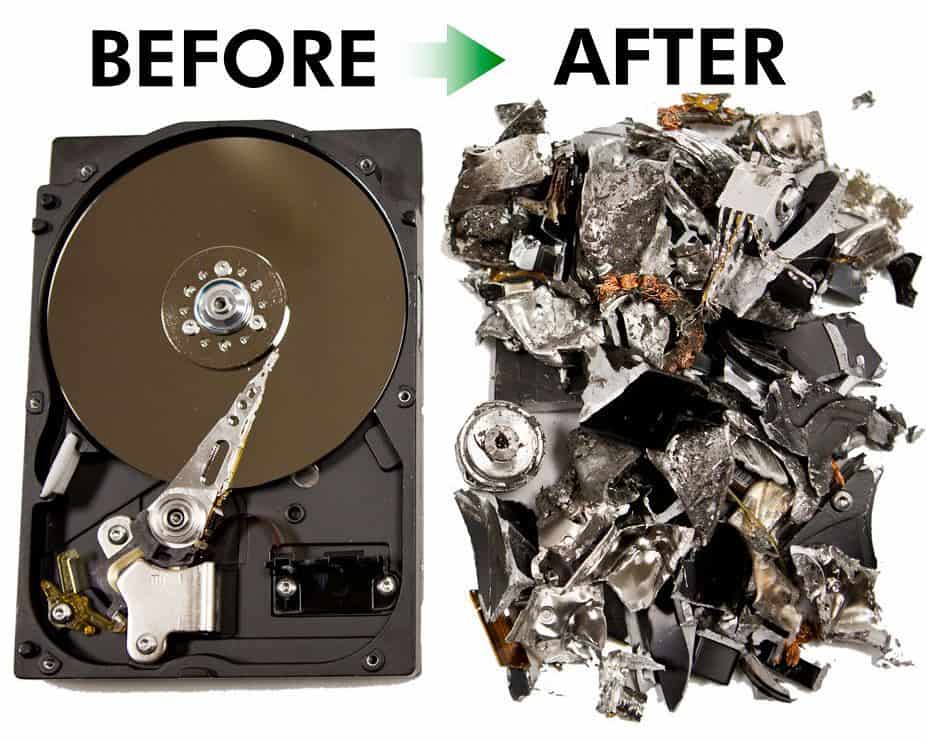Recognizing the Function of Data Destruction in Conditioning Cyber Security Defenses
Recognizing the Function of Data Destruction in Conditioning Cyber Security Defenses
Blog Article
How Correct Data Damage Contributes to Robust Computer Security Solutions and Mitigates Dangers of Data Violations
In today's digital landscape, the importance of appropriate information damage can not be overstated, as it functions as an essential element of thorough computer security services. By implementing reliable information erasure methods, companies not just protect delicate information from unapproved gain access to however additionally reinforce their compliance with regulatory frameworks - data destruction. Nonetheless, the effects of insufficient information devastation expand beyond simple compliance; they can profoundly impact a company's cybersecurity posture and online reputation. Understanding these dimensions elevates essential concerns regarding the practices in position and their effectiveness in a period of rising cyber dangers.
Relevance of Information Devastation
In today's digital landscape, the relevance of data devastation can not be overemphasized. As companies increasingly depend on digital properties, the prospective dangers linked with information breaches and unauthorized access intensify. Effective information damage is a crucial component of an extensive info safety and security approach, guarding delicate information from falling under the hands of destructive stars.
When data is no longer needed, just deleting data or formatting disk drives is inadequate. Recurring information can often be recuperated making use of readily offered tools, posturing significant risks to both organizations and people. This underscores the necessity for durable information damage methods that ensure all information is irretrievably eliminated.
Moreover, regulative conformity requireds, such as GDPR and HIPAA, stress the commitment to secure delicate information, including its proper disposal. Non-compliance can cause serious lawful consequences and punitive damages. data destruction. Therefore, integrating efficient data damage procedures not only enhances security yet likewise strengthens a company's reputation and trustworthiness

Techniques of Secure Information Erasure
Several reliable methods of safe and secure data erasure can be employed to guarantee that sensitive info is completely removed from storage space gadgets. One extensively acknowledged technique is data overwriting, which includes replacing existing information with arbitrary patterns multiple times. This technique dramatically reduces the opportunities of information healing, although it may not be efficient versus advanced forensic strategies.

Physical damage is also a dependable strategy, where storage space gadgets are rendered pointless through shredding, crushing, or incineration. This technique ensures that information can not be recuperated whatsoever but calls for careful handling of harmful products.
Lastly, specialized software program tools created for safe and secure data erasure provide functionalities that abide by numerous erasure requirements. These tools frequently consist of attributes like confirmation processes to validate successful data destruction.
Using these techniques in mix can boost data protection and mitigate the risks related to information violations, ensuring that delicate information is not accidentally subjected.
Legal and Conformity Factors To Consider
The techniques utilized for safe and secure data erasure not only serve to shield delicate details but also has to straighten with lawful and conformity frameworks regulating information protection. Organizations are called for to follow numerous guidelines, such as the General Information Protection Law (GDPR), the Health Insurance Policy Transportability and Responsibility Act (HIPAA), and the Payment Card Industry Data Security Standard (PCI DSS) These laws mandate certain methods for information managing and destruction, ensuring that sensitive and individual data is irretrievably eliminated when no longer required.
Failing to conform with these lawful needs can lead to substantial penalties, consisting of fines and reputational damage. Furthermore, companies should keep records of information devastation processes, demonstrating conformity throughout audits or examinations. This paperwork not just secures against lawful effects however likewise strengthens trust with stakeholders and customers, showcasing a dedication to data safety and security.
Incorporating lawful and conformity factors to consider into information damage practices is crucial for any company. It reduces the danger of data violations and shows a proactive strategy to Visit Website securing delicate information, eventually cultivating a society of protection and liability throughout the organization.
Influence On Cybersecurity Position
Effective information damage go to this web-site considerably boosts an organization's cybersecurity posture by lowering the prospective attack surface area for cyber hazards. When sensitive data is not effectively damaged, it remains available to harmful actors that can manipulate this info for unapproved access, identification theft, or corporate reconnaissance. By carrying out durable data destruction protocols, organizations can properly decrease the danger of information violations and boost their total security framework.
Additionally, the safe and secure disposal of unneeded or outdated information not only safeguards delicate info but likewise assists organizations adhere to market policies and criteria. Failure to properly destroy data can cause extreme legal effects and reputational damages, further endangering an organization's cybersecurity stance.

Eventually, prioritizing efficient data devastation is essential for cultivating a durable cybersecurity posture, making certain that organizations continue to be vigilant against evolving cyber risks while safeguarding their crucial possessions and stakeholders.
Finest Practices for Organizations
Implementing ideal techniques for information destruction is vital for companies intending to guard sensitive info and reduce cybersecurity risks. Primarily, companies need to develop an extensive data damage policy that details procedures and obligations. This plan should abide by relevant laws, such as GDPR or HIPAA, making certain lawful consistency.
Second of all, it is vital to use approved information sanitization techniques, consisting of information wiping, degaussing, and physical destruction, customized to the kind of information and storage space tool. Utilizing qualified professionals for information devastation solutions improves the integrity of these approaches.
Additionally, companies address must maintain a detailed inventory of all information storage devices, guaranteeing that all outdated or replaced tools undergoes damage. Normal audits of data damage practices can help identify weaknesses and improve compliance.
Employee training is an additional essential facet, as staff must understand the value of information destruction and follow established methods. Ultimately, organizations must document all information devastation activities to provide liability and traceability, which can be important throughout audits or in case of a violation.
Final Thought

One widely identified technique is information overwriting, which involves replacing existing information with arbitrary patterns several times.The techniques used for secure information erasure not just serve to shield sensitive information but also needs to align with legal and compliance frameworks regulating information protection. These laws mandate particular protocols for data handling and destruction, ensuring that sensitive and personal information is irretrievably gotten rid of when no longer required.
By carrying out robust information destruction procedures, organizations can effectively reduce the risk of data breaches and enhance their general security framework.
In conclusion, correct data damage is important for boosting computer protection services and reducing the dangers connected with data violations. - data destruction
Report this page